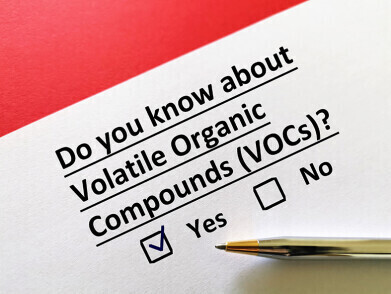Gas detection
The key to VOC monitoring: understanding TO-14, TO-15, & TO-17 standards
May 08 2024
Environmental sampling and monitoring are essential tasks to maintain the health and safety of our surroundings. Within this sphere, Volatile Organic Compounds (VOCs) monitoring is crucial. We rely on several methodological guidelines for consistent, reliable results, and the U.S. Environmental Protection Agency (EPA) established methods TO-14, TO-15, and TO-17 to streamline these processes.
TO-14 Method, also known as the EPA Compendium Method TO-14A, is focused on the determination of VOCs in ambient air using GC/MS (Gas Chromatography/Mass Spectrometry). It generates data for nearly "67 target volatile organics". This method provides practical guidance for monitoring a range of VOCs and achieving quality assurance in VOC detection, enabling us to accurately identify and measure pollution levels.
TO-15 Method, encompasses the collection of VOCs in air collected in specially prepared canisters and subsequent analysis by GC/MS. Like TO-14, TO-15 targets a range of specific VOCs, but it emphasises a broader subset - around 97 compounds. This method has been widely used for various applications including fence line monitoring, leak detection, indoor air quality, and site remediation studies. Its prime advantage is the capacity to store sample for a relatively longer duration, which provides convenience and flexibility in sample collection, shipment, and analysis.
TO-17 Method, distinct from TO-14 and TO-15, uses 'active sampling onto solid sorbents followed by Thermal Desorption (TD) and GC/MS analysis'. This method offers a significant advantage because it allows monitoring of a broader range of volatile and semi-volatile organic compounds. Furthermore, it is a more suitable technique for analysis of trace level contaminants. In addition to air monitoring studies, TO-17 is used in other applications like material emissions testing and occupational hygiene monitoring. It enables the analysis of polar and light compounds as well, which might otherwise be difficult to capture using canister-based methods.
By following the TO-14, TO-15, and TO-17 methods, scientists can conduct thorough VOC sampling and monitoring, gathering data that is accurate, reliable, and comparable across different studies. While each method has its unique advantages and application, it is also routine to use them concurrently for a more comprehensive monitoring strategy.
As scientists and environmentalists strive to understand and alleviate the impact of VOCs on our world, the continued refinement and employment of these sampling and analysis techniques will remain a priority.
CAC GAS provides TO 14, 15, 17 standards for VOC monitoring and sampling in all configurations 39, 41, 62, or subset component mixtures. Gas mixtures for all VOC’s including BTEX mixtures, Isobutylene, and other organic vapours are available.
CAC GAS also provides EPA Protocol calibration gas mixtures, specialty gas mixtures for combustion efficiency, biogas, landfill & soil remediation, and agriculture applications.
In addition, CAC GAS also supplies ISO 17025 and ISO 17034 CEM gas standards. All gas mixtures are traceable to BIPM though NIST, NPL, NMI, or other national measurement authorities, and certified by UKAS, NATA, DAkkS, or other ILAC MRA signatories to ensure compliance with local and international regulations.
Digital Edition
IET 35.2 March
April 2025
Air Monitoring - Probe Sampling in Hazardous Areas Under Extreme Conditions - New, Game-Changing Sensor for Methane Emissions - Blue Sky Thinking: a 50-year Retrospective on Technological Prog...
View all digital editions
Events
Apr 29 2025 Edmonton, AB, Canada
May 06 2025 Nuremberg, Germany
May 10 2025 Karachi, Pakistan
May 11 2025 Vienna, Austria
May 11 2025 Seoul, South Korea




.jpg)





_(4427399123)-(2).jpg)











